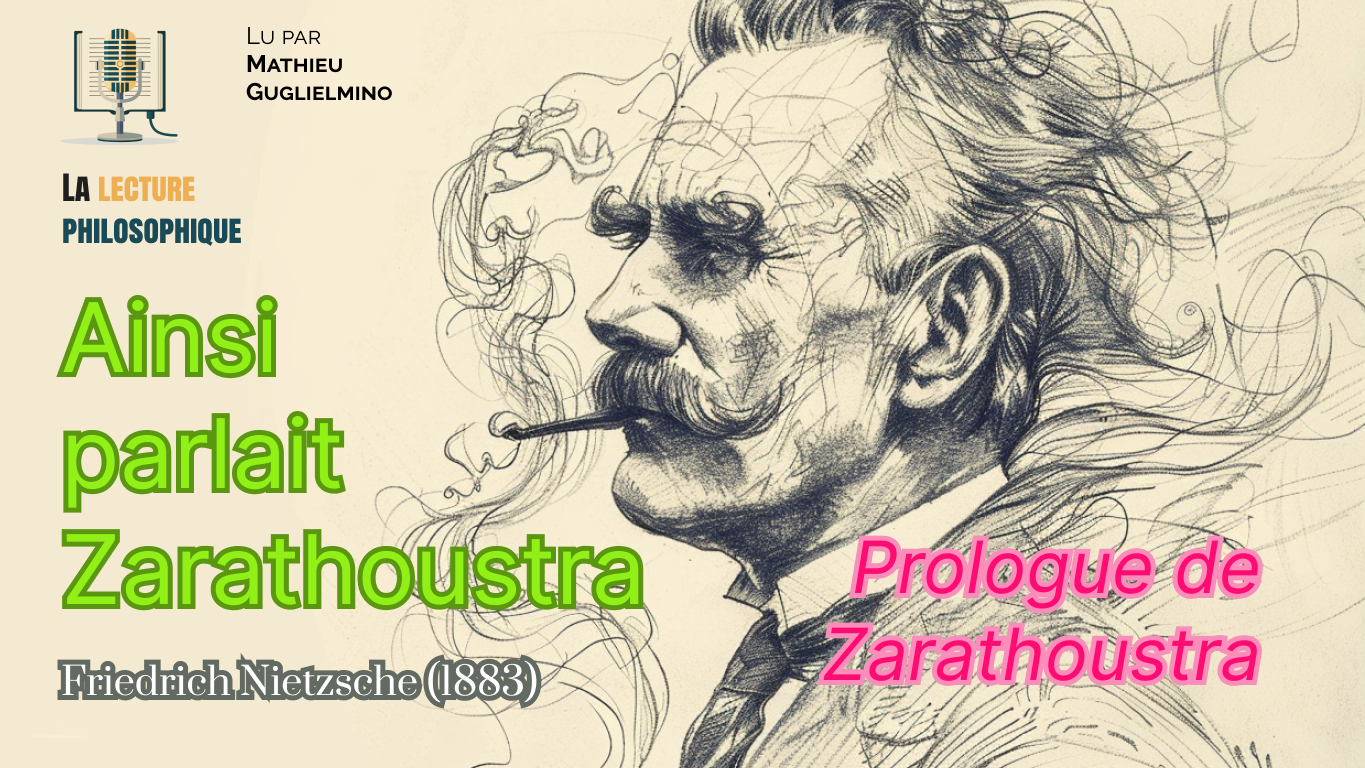
[Visual Data Storytelling #29] You Have One New Message
By Mathieu Guglielmino, Mar 18 2024
 This whole week, I will publish audio readings of Nietzsche’s Zarathoustra. Listen to the first episode on Youtube or Spotify or Apple Podcast. This issue will explain the rationale behind this new proposition.
This whole week, I will publish audio readings of Nietzsche’s Zarathoustra. Listen to the first episode on Youtube or Spotify or Apple Podcast. This issue will explain the rationale behind this new proposition.
Thinking once again about Ikigai, this Japanese concept about your raison d’être, I noticed knowledge itself was at the intersection of my data science job, my design mission, my teaching vocation, and my passion as a storyteller.
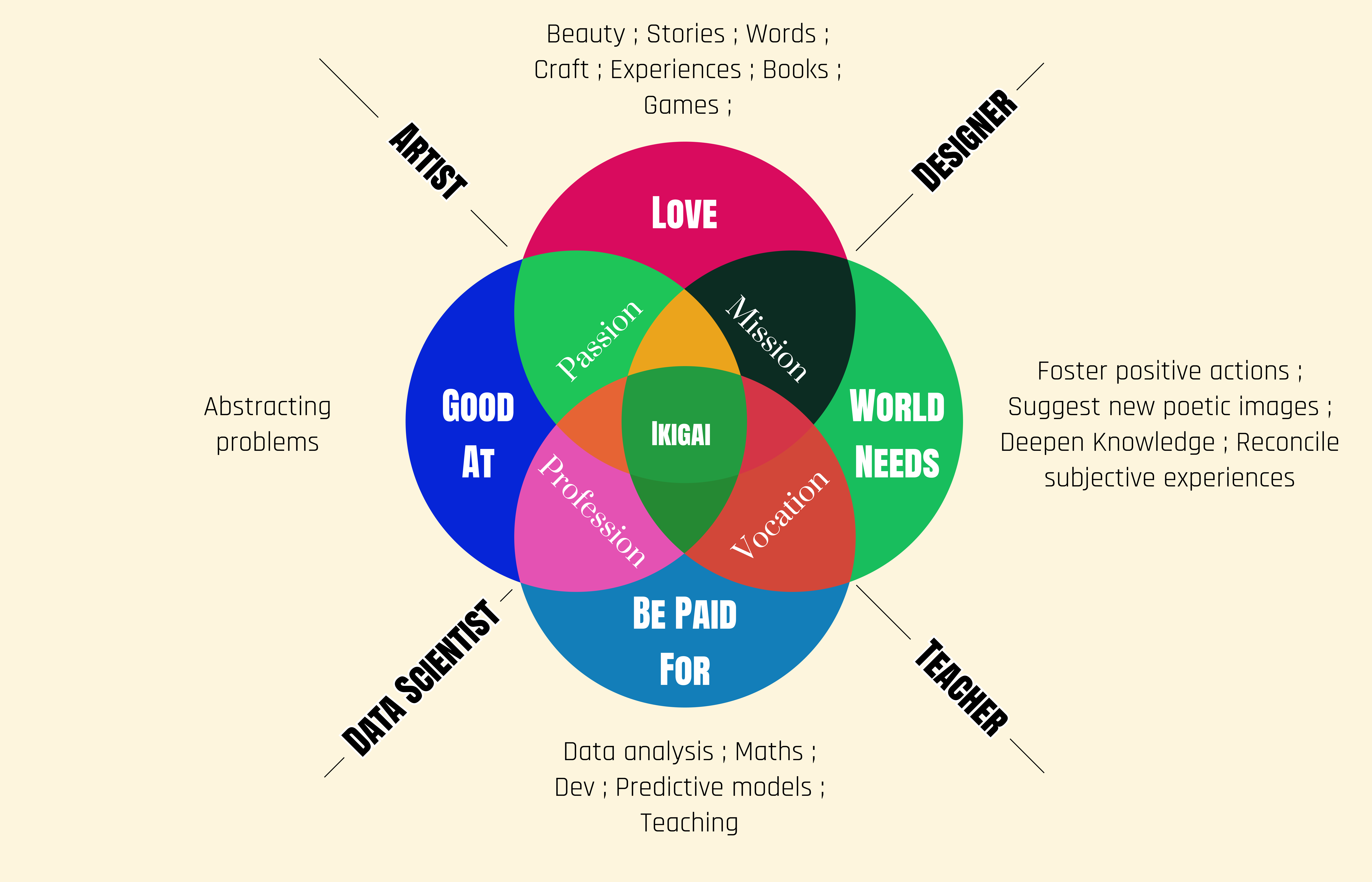 My very personal Ikigai
My very personal Ikigai
The central position knowledge holds within my interests has left me with no choice but to formally study epistemology, the study of what we know and how we know.
Visual epistemology, or graphesis as coined by Johanna Drucker, is only the tip of the icerberg of rich ways we can create knowledge and that I’ve been exploring here these past few months.
Storytelling, or data, are two others which are included in the too long a name of this very publication.
 But there’s another medium that has been overlooked in recent history : sound.
But there’s another medium that has been overlooked in recent history : sound.
The Place of Sound in Knowledge
Knowledge and Writing
There are many ways to record and share knowledge, from paintings on a cave wall to interactive information visualization in a browser, not mentioning the prominence of the textual form.
Humanity nowadays has indeed its favorite medium for knowledge, and for the past five millenniums writing has been the mainstream way we transmit anything of relevance to future generations.
The Demise of Oral Storytelling and Advent of Written History
Humanity, however, has a long prehistory, precisely before writing could record human epics in stone, which were transmitted across generations with oral stories.
Thinking about this massive shift from an oral culture to a “chirographic” one (based on writing), I started noticing the peculiar place of audio in our society, and how seldom we directly use audio to create knowledge.
I am myself a product of my time, and I never really regarded voice as a legitimate way to record knowledge. Audio, and moving images, are more an attribute of entertainment, facetious products for instant consumption. Since Herodotus and his concept of history, what should remain is written, the rest is as good as already dead.
Written Words Can Be Excluding
Writing is great. However, I reckon it can be excluding to most marginalized communities. Not having the occasion to sit down, hold a book and read the words in it should not prevent anyone from accessing demanding ideas. Moreover, writing has been so detrimental to the history of oral storytelling that it may be only fair to question this hegemony.
Convinced that podcasts and audio books—which can sneak into the most inaccessible schedules—have untapped potential, I wanted to know a bit more about the business models of this industry.
The Business Model of Audio Books
This proved a perfect occasion to cancel Netflix and subscribe to Audible.
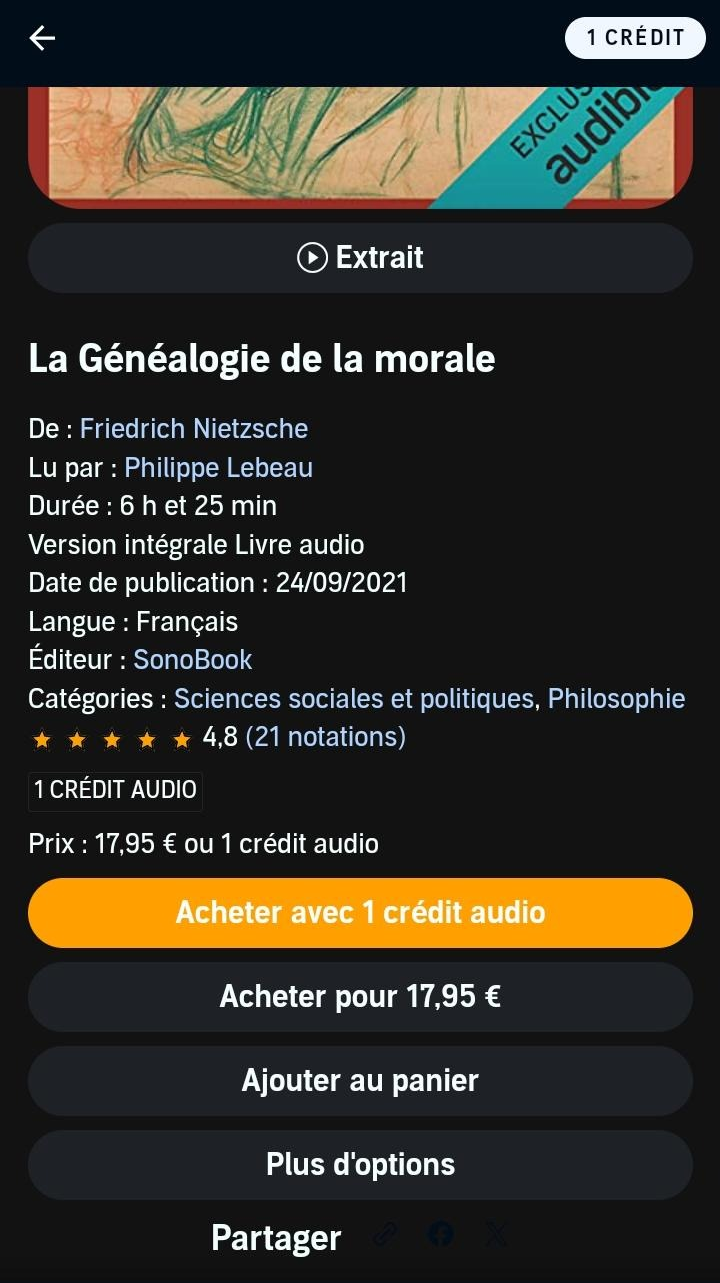 Screenshot Audible.
Screenshot Audible.
The Unrealistic Pricing of Audio Books
The subscription, for 10€ a month, gives you one credit you can use to buy any book on the platform, but only one. Once you run out of your credit, you need to pay with real money, which can amount to as much as 18€ for the dead writer Nietzsche.
Luckily, the subscription includes many books, though not the ones you want to read.
So when I set myself to record my own audio books, it was both as an act of recognition of the long oral tradition in human history, and an act of spite towards Audible and the fuck of a business model this is.
I was outraged at how easier it was for Netflix to offer a catalog of thousands of shows and movies for the same price as it was to get as much as one audio book.
But reading out loud is a soothing activity, so I couldn’t stay mad for long.
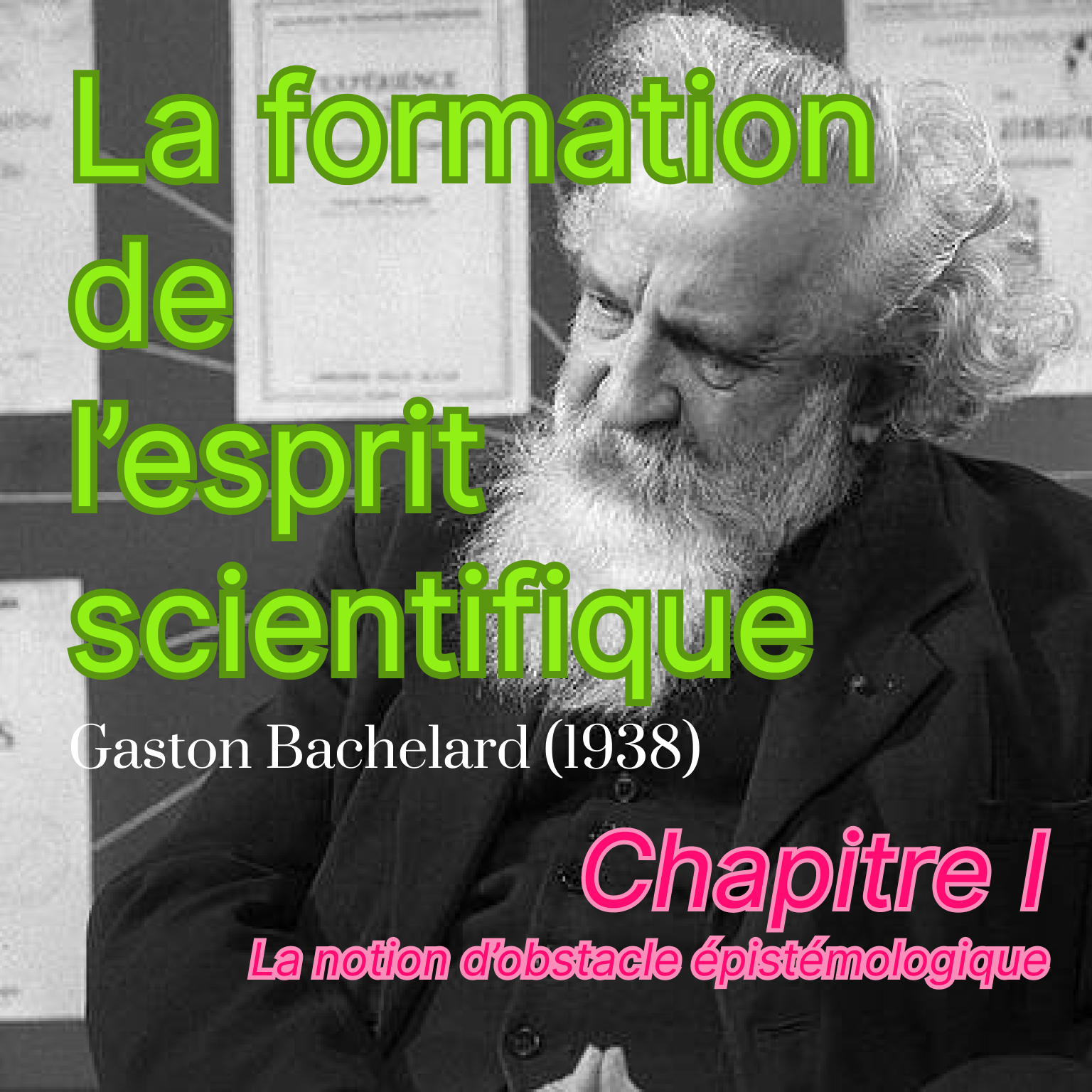 First episode I recorded. Listen on Spotify / Watch on YouTube. For free.
First episode I recorded. Listen on Spotify / Watch on YouTube. For free.
The Bottleneck Explaining the Price
Generally, audio books are recorded by one person. This current approach creates a natural bottleneck as the number of creators is ridiculously small in comparison to the number of books, essays or poems there are.
A large number of subscribers would be good reason to drop the subscription price, but the limited offer and prohibitive pricing prevent to recruit more users, which in turn do not allow the investments needed to hire more content creators.
The market of audio books will scale by increasing the offer. This scaling can only come from a massification of the creators.
Three and a Half Apps In The Wild: Audible, the Bible, and the Voice Recorder
To better understand how knowledge as sound is dealt with in the digital world, I selected three apps because they make prominent use of audio as a core feature: Audible, the Bible app, and Samsung default voice recorder.
These three apps allow to create and share pieces of knowledge as sound. From the notable exception of the Bible, they all strongly rely on the visual metaphor of the wave as primary representation (probably because the Bible has no features for audio recording / edition). Audacity, a popular desktop app, is shown for comparison.
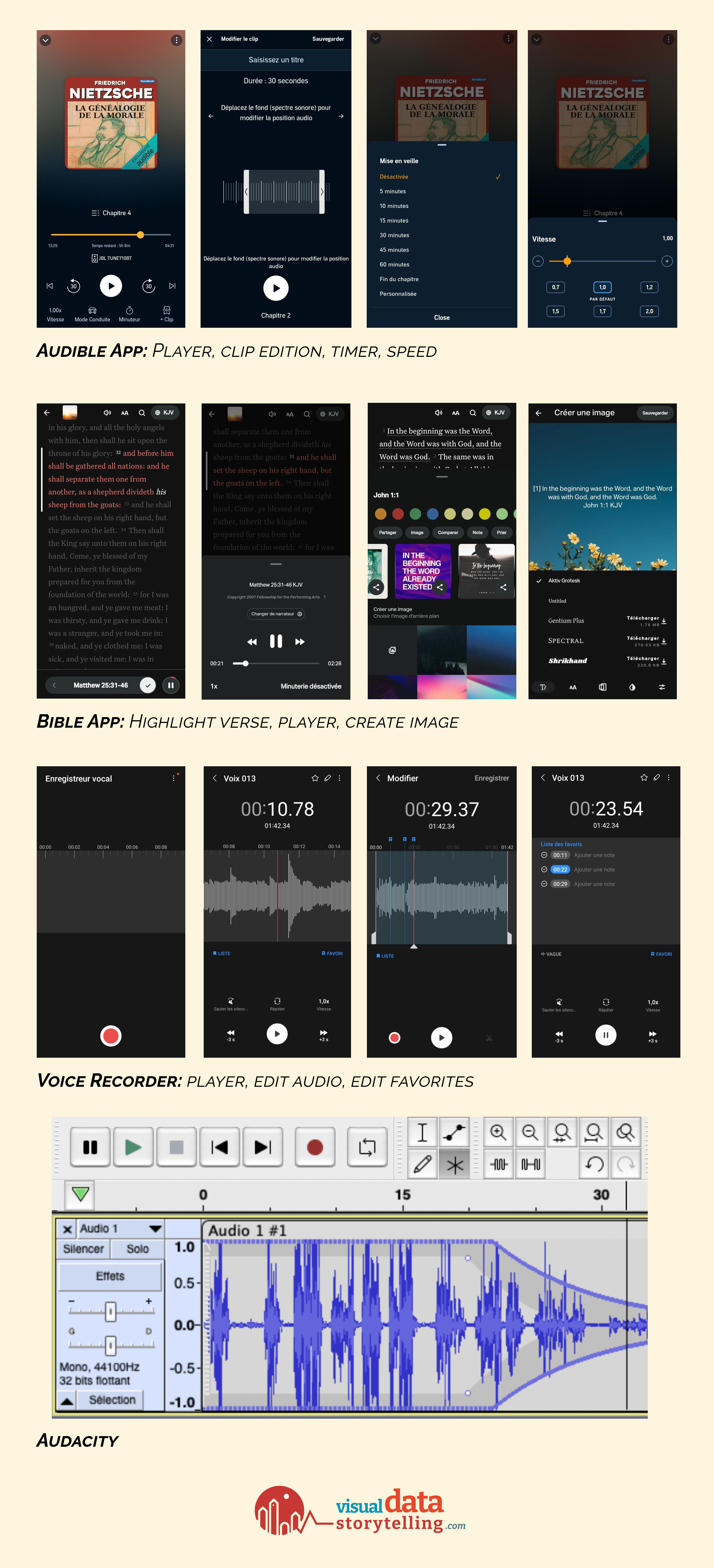
The Central Role of Audio
These three apps are built around sound snippets, which can be as long as books (divided in chapters) for audible or the Bible app, traditionally sentences, paragraphs, or whole interviews for the voice recorder, which is quite versatile given the limited number of simple things it can do well.
Text Structure And Audio Segmentation
The Bible and audible rely on the structure of the text (especially chapters) to alleviate the task to navigate in the audio.
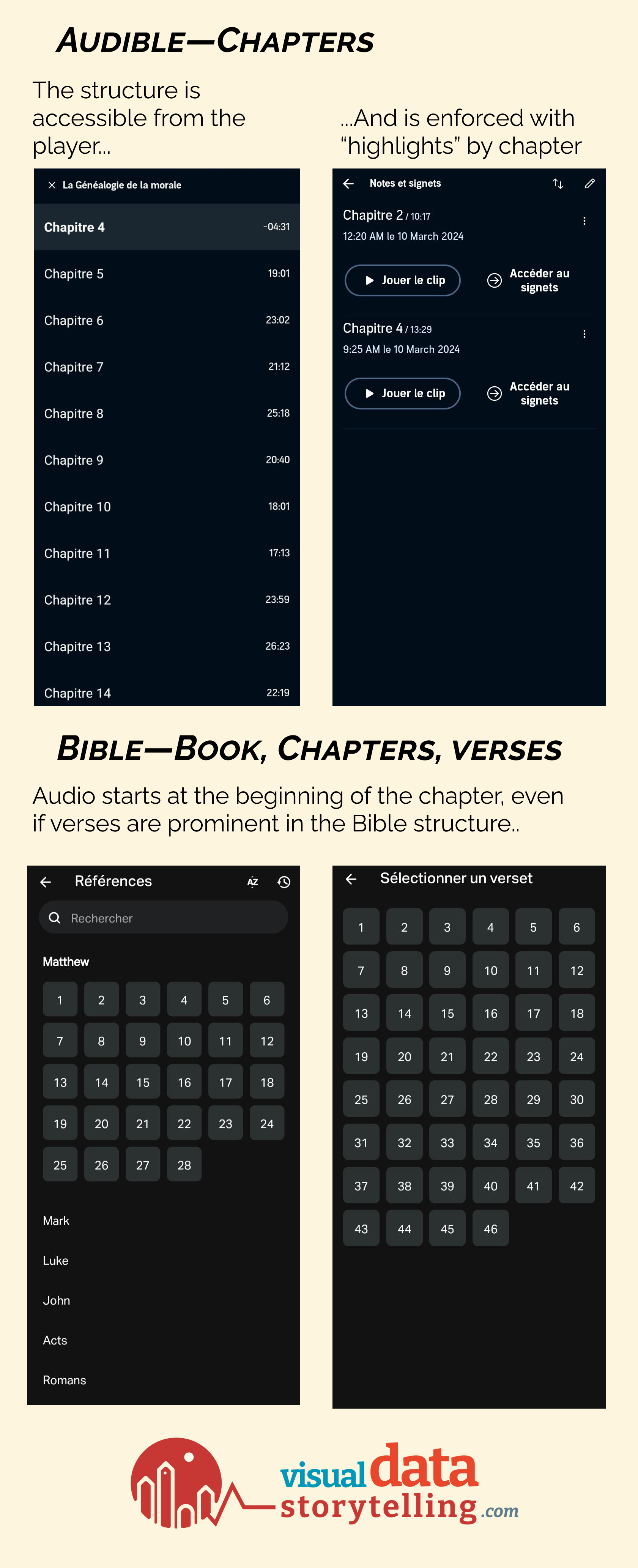 Books are usually divided in chapters, and both audible and the Bible rely upon this structure.
Books are usually divided in chapters, and both audible and the Bible rely upon this structure.
In audible, highlights can be used to navigate as precisely as needed within the text (had it been annotated), but in the Bible the “track” is the whole chapter and the reader has to use the player to find the appropriate verses.
However, the transition between the player cursor and the corresponding sentence in the text is helpful.
Share
It is noticeable the Bible has a feature to share verses as images, but nothing corresponding for audio.
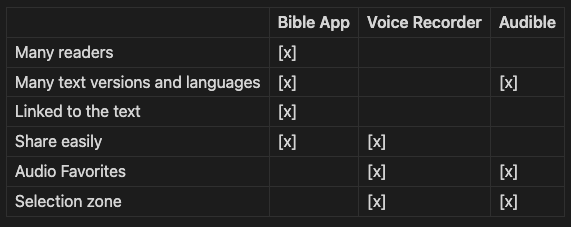 Comparison between our 3 apps on some features
Comparison between our 3 apps on some features
From Consumers to Creators
These are three great apps when it comes to audio, and their sleek design is part of their effectiveness.
However, except for the voice recorder, the other two apps, relying on pre-existing written texts, enforce a unidirectional relationship between an external creator and a consumer.
But is this relationship necessary? And more importantly, can the model survive in these conditions?
How Google Mapped the World
This is a typical problem Google encountered with early Google maps: How could a small team be able to maintain an updated version of the whole world?
Google soon realized it was impossible.
But if anyone in the world could contribute their own specific cartographic knowledge, Google would be able to map even the most remote places on Earth.
And they did.
I think “clips” on YouTube are motivated by similar motives. Most creators on YouTube are professionals, or tend to be, and as such are not as abundant as the random people who can be an instant viral phenomenon on platforms like TikTok with a mere phone.
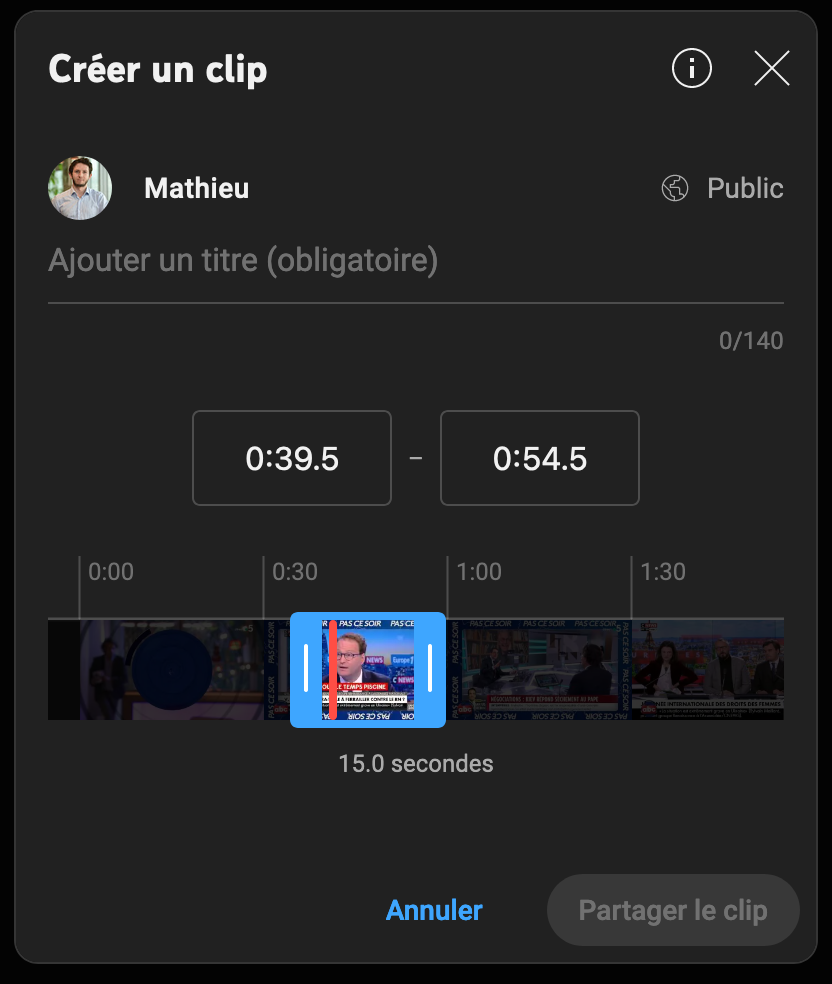 “Shorts” are modern times quotes
“Shorts” are modern times quotes
Whether this unstoppable inflation of content is positive is beyond the scope of this essay. We can but observe this on-going transformation regarding where we are all positioned on the creation spectrum. Platforms are aggressively pushing for everyday people to become their inexpensive creators, amplifiers of preexisting content.
“The Philosophical Reading”, and Beyond
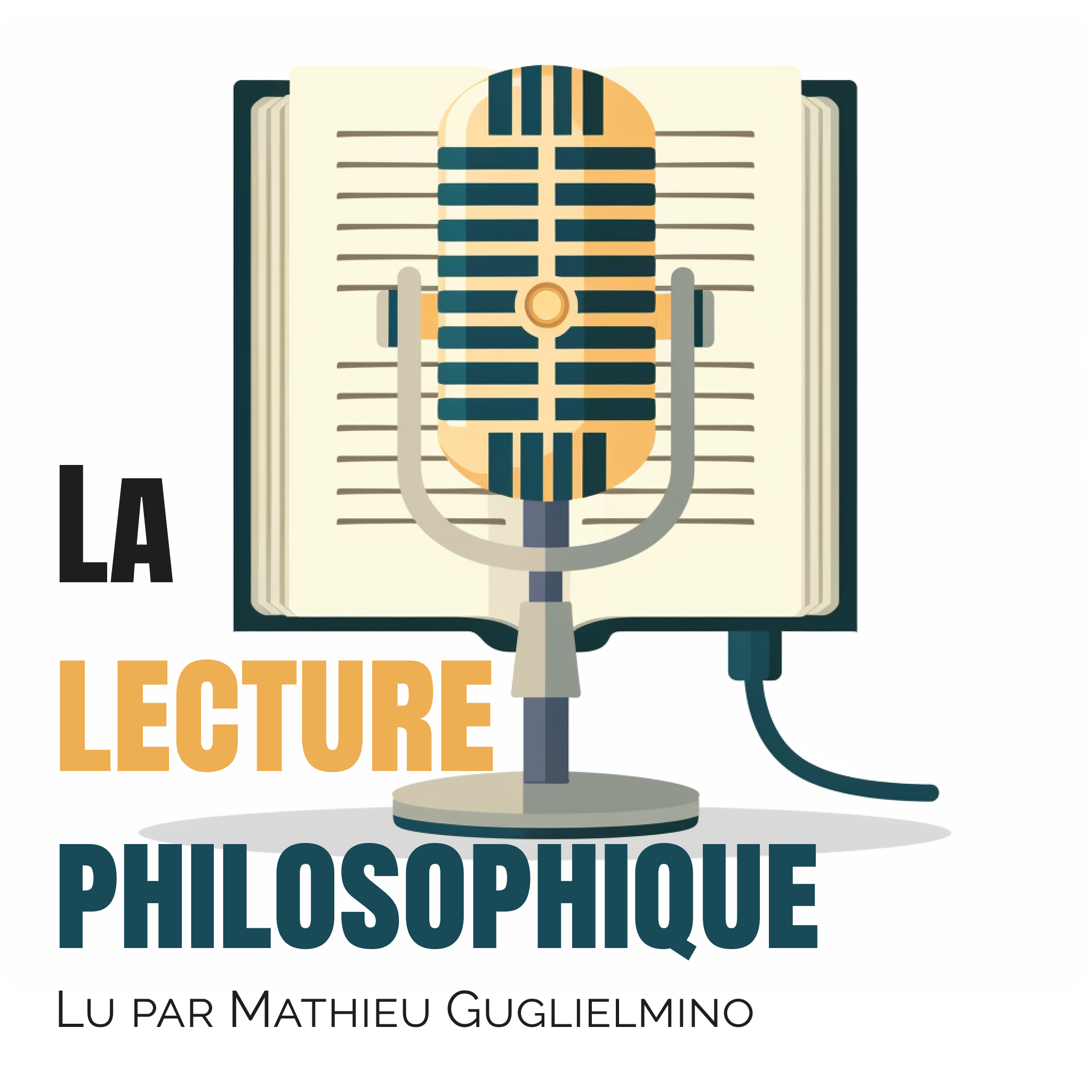 The logo of the show was created with Midjourney
The logo of the show was created with Midjourney
A Podcast For Everyone to Hear
My goals are now two-fold:
- deepen my knowledge of philosophical work by reading out loud, to incorporate the music and rhythm of great writing into the fabric of my thinking : this is “La lecture philosophique”, a fancy name for me reading texts I may want to listen to again someday in the subway ;
- abstract and generalize to the creation and sharing of knowledge as sound.
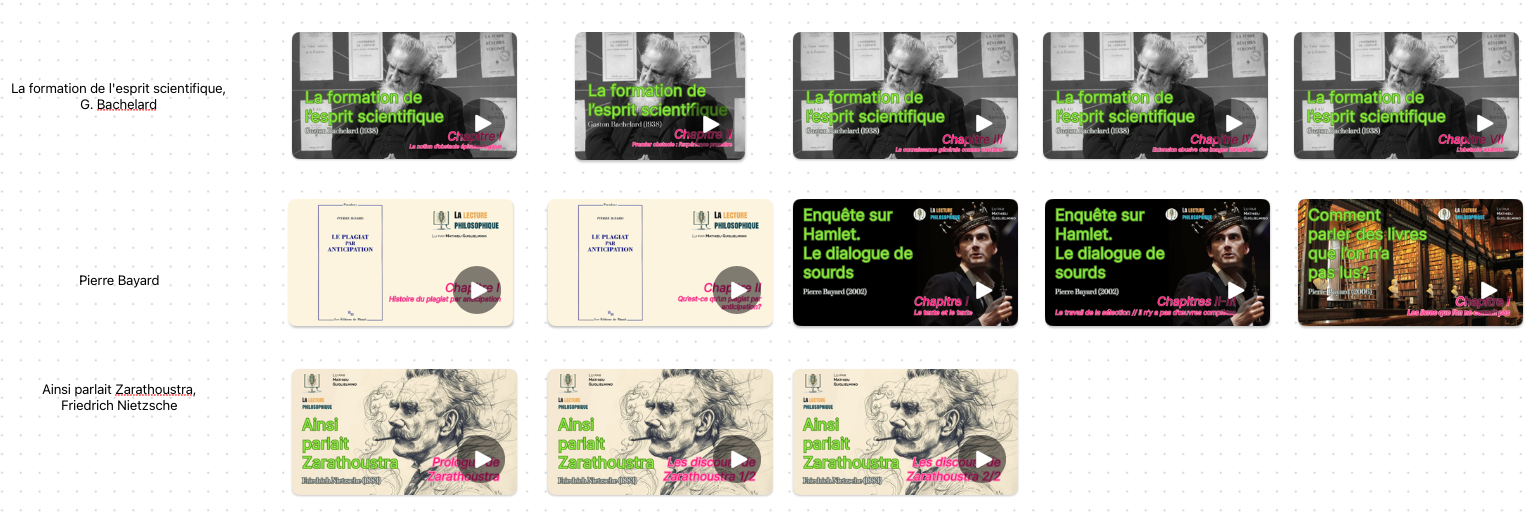 Episodes of “La lecture philosophique” (The philosophical reading) (click to open in Spotify)
Episodes of “La lecture philosophique” (The philosophical reading) (click to open in Spotify)
Designing the Voice Recorder
I know exactly nothing about audio technologies, and much of that I forgot from a master’s class in engineering school about signal processing.
But before diving into the technicalities, I wanted to analyze the design of a simple app revolving around sounds, and the voice recorder looked like a perfect fit.
However, it should be noted that even if it gives the salient structure of the app, the following diagram is far from complete. Not having a design system yet to visualize a system architecture means each modification is costly, and space is a rare resource, hence some elements have been filtered out.
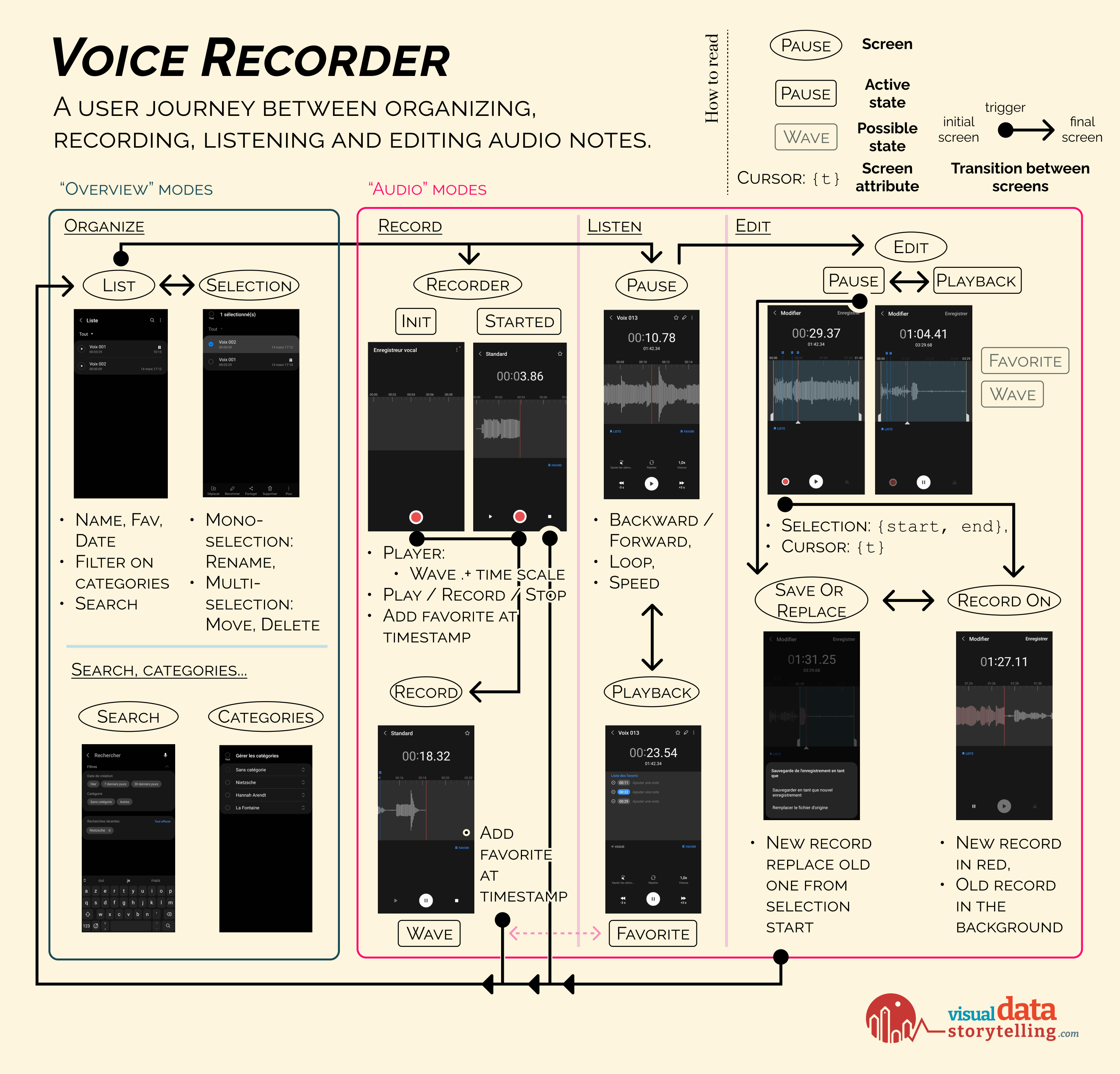 Two main modes in the voice recorder: (A) Overview of the notes with dates and categories ; (B) The “audio” modes: (i) Record a new note ; (ii) Listen to existing note ; (iii) Edit the audio. (large version)
Two main modes in the voice recorder: (A) Overview of the notes with dates and categories ; (B) The “audio” modes: (i) Record a new note ; (ii) Listen to existing note ; (iii) Edit the audio. (large version)
A Note on Node-Edge Diagrams
That node-edge diagrams once again appear in this context should come as a surprise to no one, given how versatile they are to express a range of situations. From these complex matters of states and interactions, many representations were suggested for different purposes, such as state diagrams, flowcharts (not the same), wire-frames, or (paper) prototypes. As we can see, networks are prominent representations.
However, I am yet to find a satisfying (design) model to legibly visualize the screens and the transitions between them as user actions. One screen can exist in different states, which can impact its components (state “pause” to “playback” in “edit” mode change the play icon from a triangle to a double bar).
I don’t know of an adapted tool for this problem. Do you? Figma is versatile enough to allow to wide range of visual displays, but graphs are tedious to create as the positioning of every element is manual.
I know of many solutions for graphs visualization, but none has proven versatile and mainstream in its use. This has to do with the most mentioned problem to visualize—thus, edit—graphs, which is they rapidly tend to become cluttered.
Idea: a multi-purpose graph editing “tool” in the browser, as versatile as a whiteboard but adapted to networks, with layers, auto-layout, hierarchical grouping, nested blocks, batch edition of attributes, schema for nodes and edges, customization of nodes icons, emphasis on text annotations, strokes around texts and arrows, and export to typical network serialization formats like graphson or graphml…
Everyone, for a long time, no?
Crowdsourcing the Recording of Books
Coming back to this idea of transforming consumers into creators, I don’t think there exists a solution to crowdsource the recording of books yet.
This would be a daring bet : is it realistic to imagine non-professional individuals create worth listening content?
If we accept such an app makes sense, these are the values it should defend:
- The app should promote books for everyone, regardless of wealth and social status ;
- The app should encourage to share knowledge as widely as possible ;
- The app should contribute to improve reading and oral skills ;
- The app should teach and promote reading and oral storytelling traditions ;
- The app should try to weave sounds in the daily experience of knowledge ;
- The currency of the app is knowledge ;
A few consequences of these values are that the app should be accessible for free (1), promote the diffusion of books as podcasts in other platforms such as Spotify or Apple Podcast (2), link the text and the sound as tightly as possible (3), promote the places of storytelling within the real world such as bookshops and libraries (4), or allow to record a text on the fly (5).
Using knowledge as a currency (6) is an effective way to use popular gamification techniques but has counter-intuitive properties, most notably being you end up having more once you share it.
I wonder how a real system could work around this notion, if possible at all.
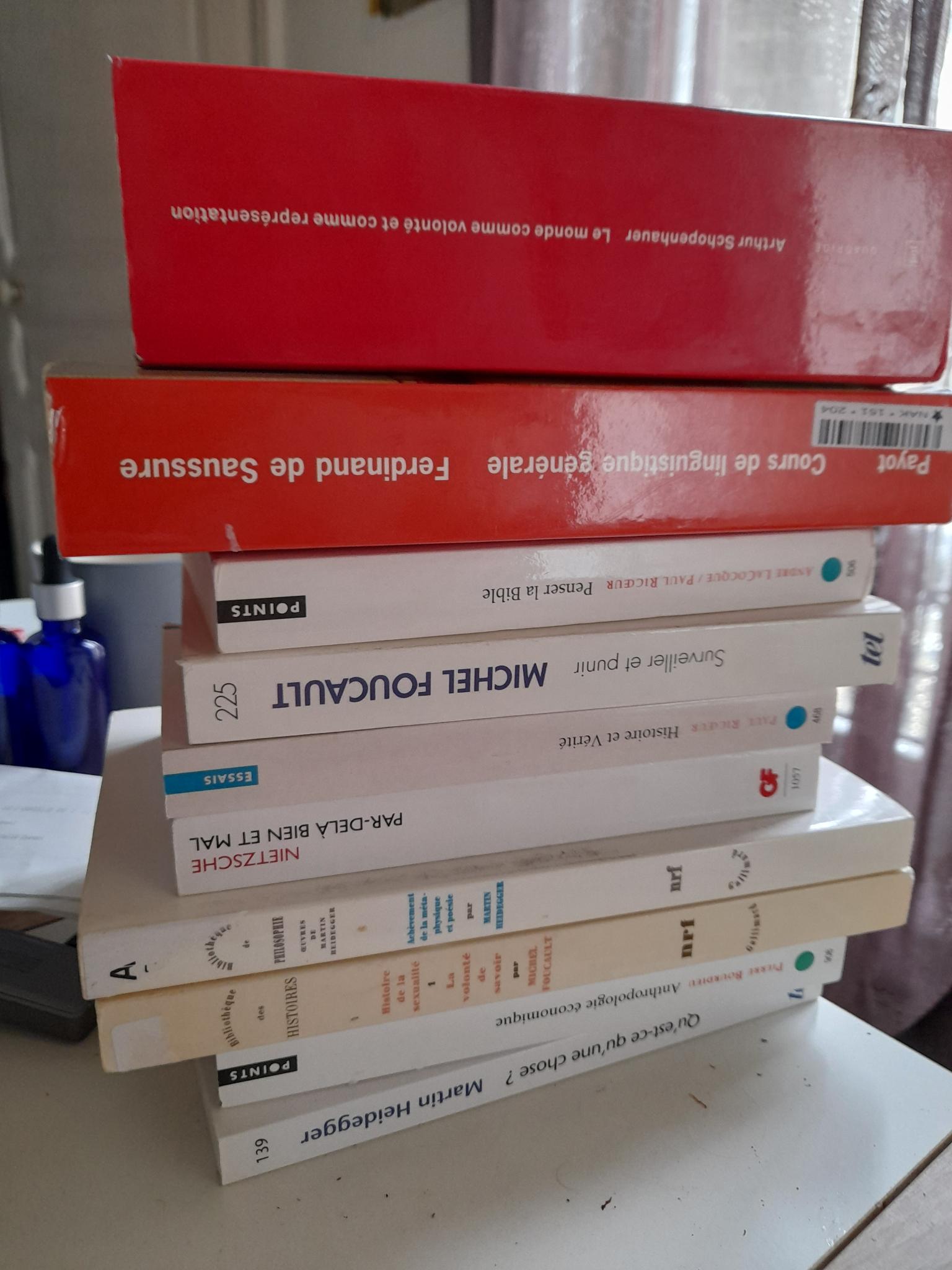 Some books on the shelf, first and foremost the classic “Cours de Linguistique Générale” by Ferdinand de Saussure which I had been planning to dive into for ages.
Some books on the shelf, first and foremost the classic “Cours de Linguistique Générale” by Ferdinand de Saussure which I had been planning to dive into for ages.
Conclusion
Reading is a simple yet transformative creative act.
As an activity, reading out loud is a tiny fraction of oral storytelling traditions—which goes from incantatory prayers to improv’—as it is bounded to written words.
However, it is:
- a therapeutic way to have a privileged moment of meditation that leverages the benefits of reading and talking,
- a way to connect to the words themselves and the music of the text,
- a homage to long-standing oral traditions of storytelling.
For too long I have circled around sounds, and made the grave mistake to never formally acknowledge how essential the voice is to a most profound human experience.
Acting, singing, reading, public speaking, Twitch live streaming, Spotify podcasting, all of these vibrations are privileged moments to master our organ of speech, and should be carefully provoked as often as necessary for us to progress.
See you next week,
Mathieu Guglielmino
PS : This edition marks the shift from an exclusive focus on information design to a broader representation of knowledge. This shift was initiated with my journey around games, or “quest charts”, which is still going on but was hurt by my failure to create something out of the report about “ski resorts and global warming”, in spite of much energy devoted to it.
However, the digest will still exist, and will be sent less frequently. It will live among other thoughts about data, design, storytelling, and knowledge. Schedule TBD.
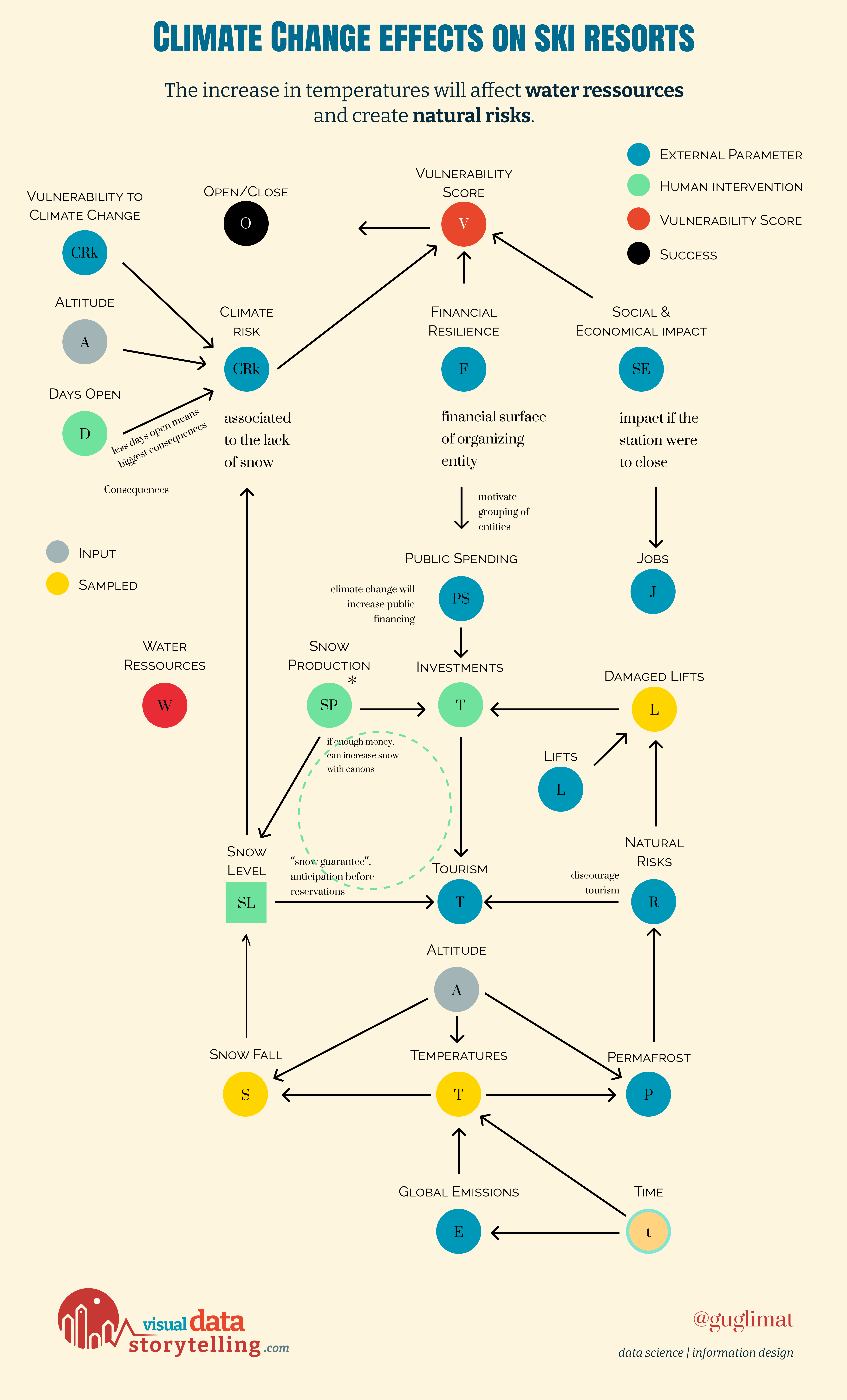 Initial attempt to represent the causal model as outlined in the report “Ski resorts facing global warming” by the French Cour des Comptes.
Initial attempt to represent the causal model as outlined in the report “Ski resorts facing global warming” by the French Cour des Comptes.